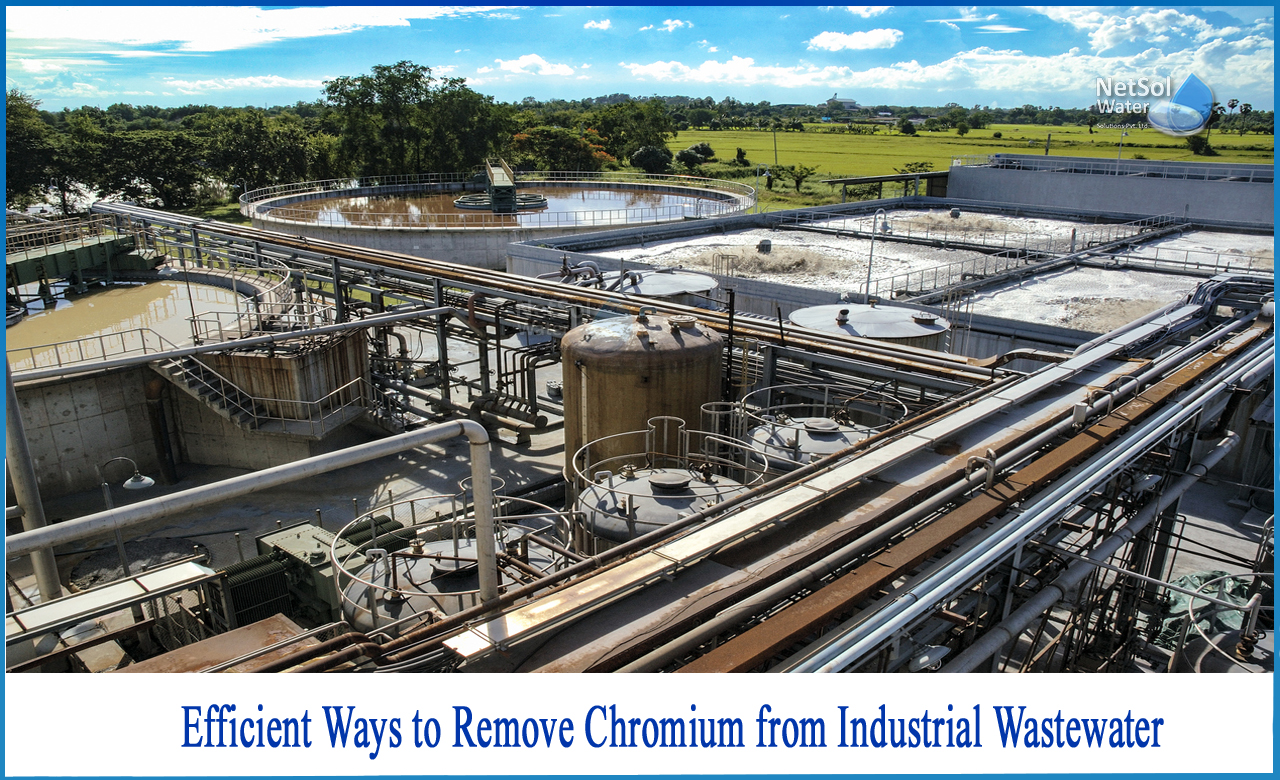How to remove Chromium from Industrial wastewater?
Toxicity, non-biodegradability, and accumulation in living organisms make heavy metals one of the most common sources of industrial water pollution around the world.
Chromium (Cr) is a chemical element that is used in the manufacturing of refined metals and alloys, leathers, paints, pigments, wood preservatives, electronics, and chemicals, among other things. In the aquatic environment, chromium is found in both trivalent [Cr(III)] and hexavalent [Cr(VI)] forms. In animals, trace levels of Cr(III) are required for sugar, protein, and fat metabolism, but Cr(VI) is a main pollutant and a possible carcinogen that causes primary liver cancer. As a result, industrial wastewater containing chromium must be treated before being discharged into the environment.
Removal of Chromium from Industrial wastewater
1: Removing chromium with chemical precipitation
The most frequent method for removal is chemical precipitation. Sodium hydroxide, calcium hydroxide, magnesium oxide, and calcium magnesium carbonate are common chemical precipitators.
Chemical precipitation is a separation method in which chemical precipitants are given to a liquid stream to push contaminating ions out of the solution, allowing them to be removed via physical separation.Pollutants settle as precipitates in this procedure, which are then removed from the solution using filtration, centrifugation, or other appropriate methods. As a precipitating agent, a coagulant causes the smaller particles suspended in solution to grow in size in order to settle down as sludge. Hydroxide precipitant is extensively employed because of its inexpensive cost, convenience of usage, and ability to adjust pH.
2: Removing chromium with ion exchange
Ion exchange is a reversible chemical reaction that involves the exchange of ions in solution for comparable ions linked to a solid matrix. Because it is a cost-efficient and convenient technique in operations, it is particularly effective at removing heavy metals from wastewater.An IX resin substrate performs the task of an IX unit, and it must be carefully selected based on process circumstances and stream characteristics.
Strong acid cation (SAC) resins, weak acid cation (WAC) resins, and chelating resins can all be used to remove trivalent chromium. Strong base anion (SBA) resins, on the other hand, can be used to remove hexavalent chromium. To achieve consistent and appropriate chromium removal, facilities must plan for frequent maintenance and resin regeneration cycles in any instance. In addition, facilities may need to adopt a brine waste minimization strategy to reduce the usage of regenerant chemicals and liquid waste volumes, as well as to improve overall system performance.
3: Removing chromium with coagulation and flocculation
Coagulation and flocculation are wastewater treatment processes that remove contaminants from colloidal or fine-particle streams. To stimulate agglomeration (or "flocculation") of tiny particles into large particles that settle out of the liquid stream, chemical coagulants are added to the stream along with mild mixing.
Coagulation and flocculation can be used to separate a range of things, including organic compounds, colour, odour, suspended particles, and heavy metals like chromium. These are commonly employed as a first stage in wastewater treatment to reduce the overall load of chromium or other heavy metals, which can limit the effectiveness of biological treatment, such as that found in municipal wastewater treatment facilities.
4: Removing chromium with membrane filtration
Membrane filtration is a physical separation method that involves passing a liquid stream through a semi-permeable filtration membrane that separates materials based on the size exclusion principle. The membrane contains precisely designed pores that allow the liquid stream and smaller particles to pass through while retaining the targeted pollutants.
Ultrafiltration, nanofiltration, reverse osmosis, and electrodialysis are some of the membrane filtration methods typically utilized for chromium separation. Multiple types of membrane filtration are sometimes used in succession to enhance the performance and longevity of the membranes while also removing enough chromium. Membrane filtration is also a viable option for facilities that want to reclaim chromium, because both NF and RO can create chromium-rich retentate that can be reused in process streams.
What can we do for you?
We at Netsol Water help you upgrade or install a wastewater treatment system that can help you in removing these difficult contaminants, like chromium, from the water you treat. Give us a call and we'll work with you to come up with cost-effective alternatives.
If you need any advice or assistance on selecting the best water and wastewater treatment plant,
Call us on +91-9650608473;
Or, write us at enquiry@netsolwater.com



